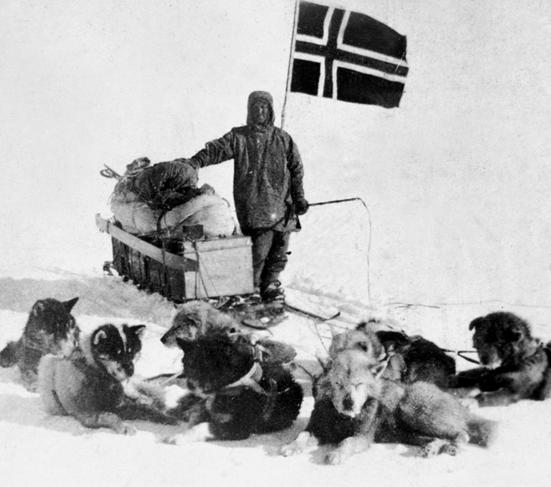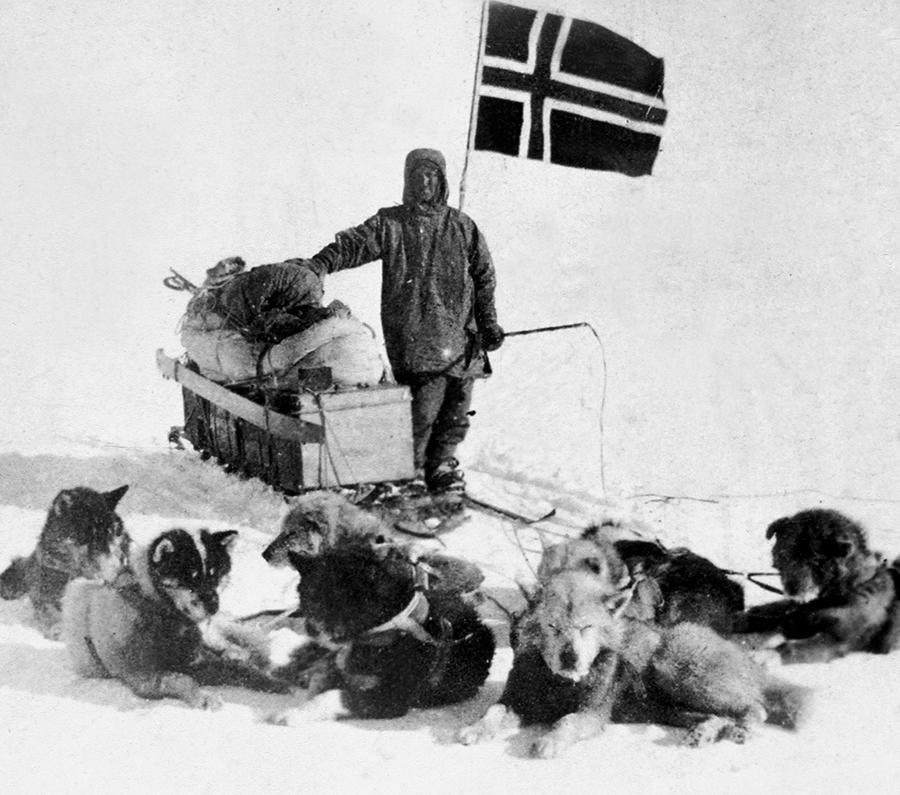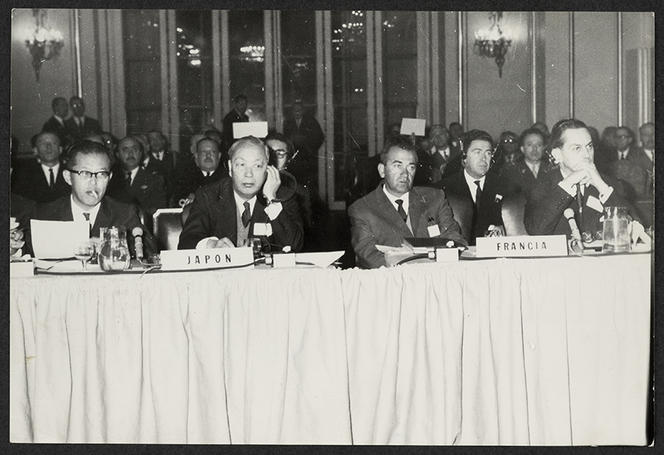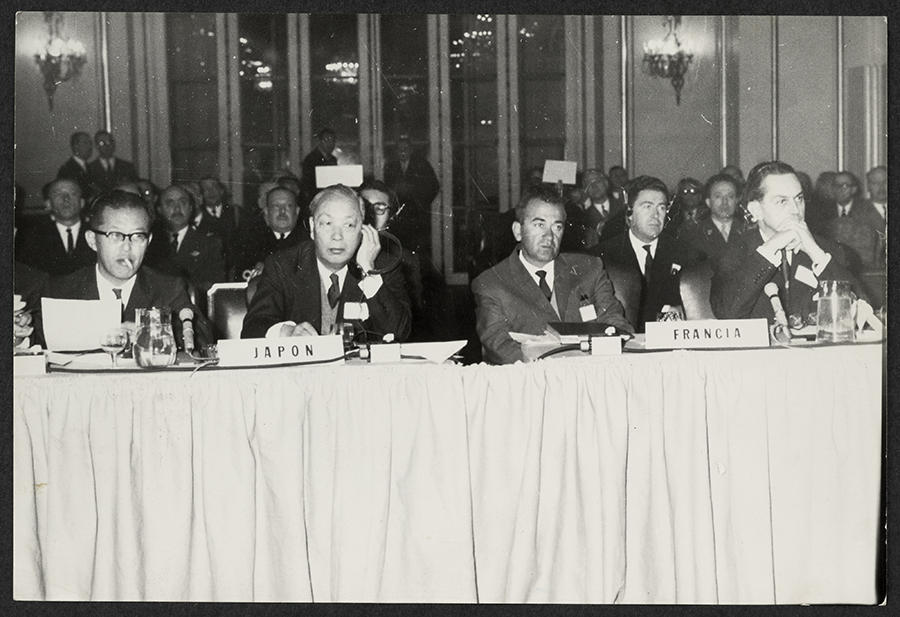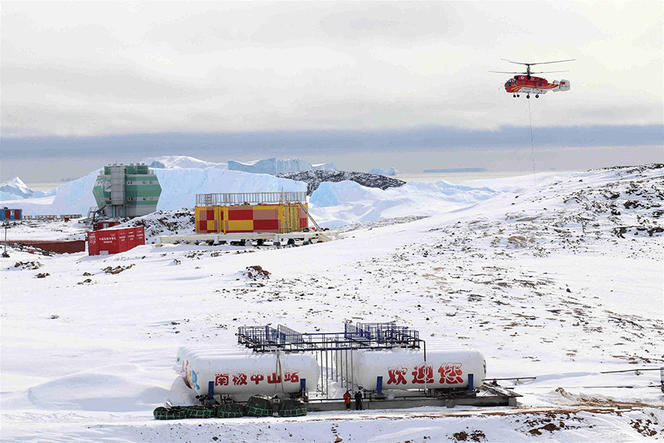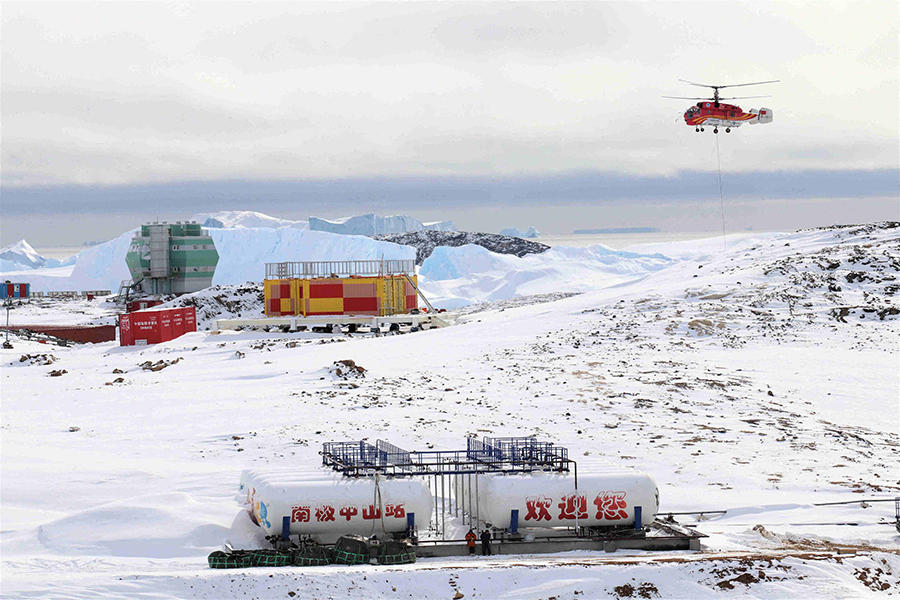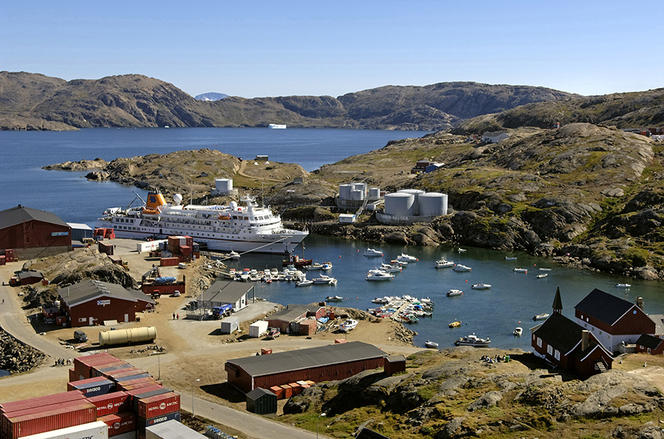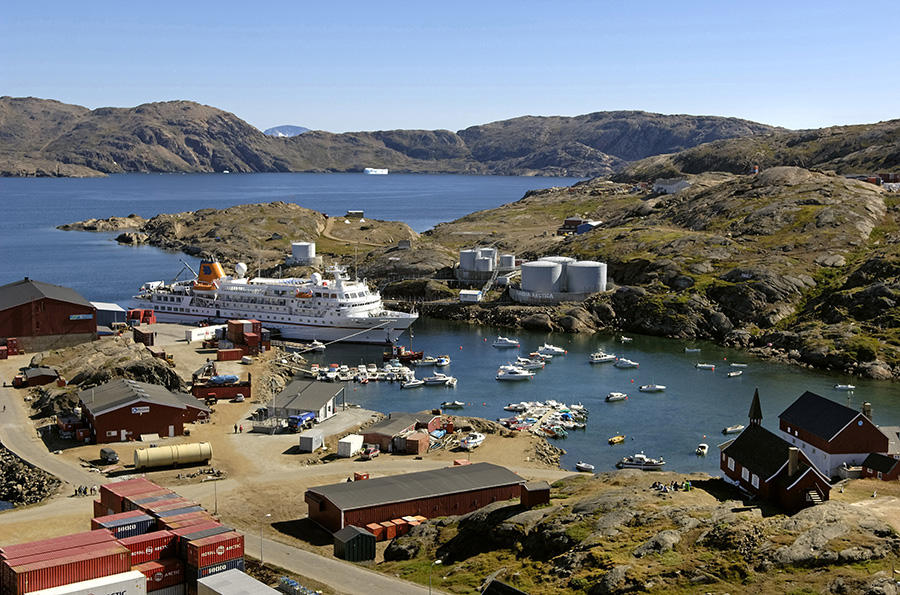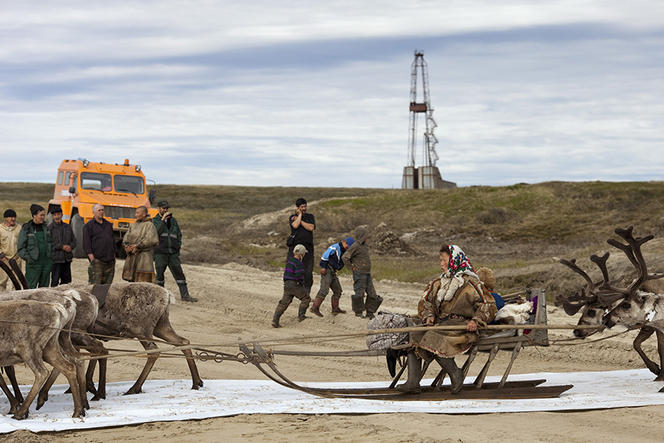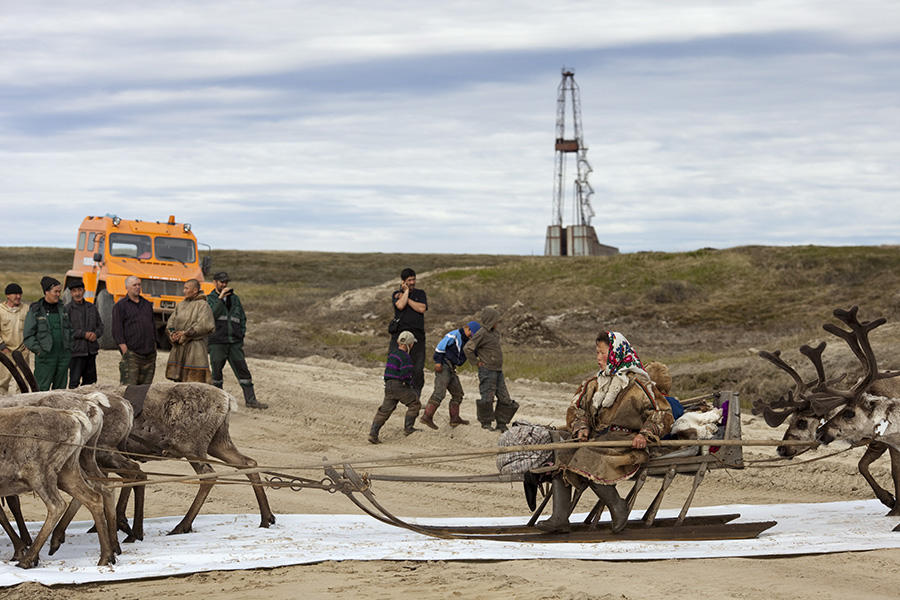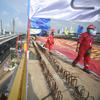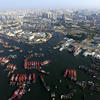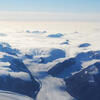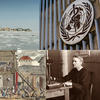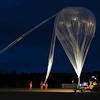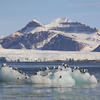You are here
The poles at the centre of the world stage
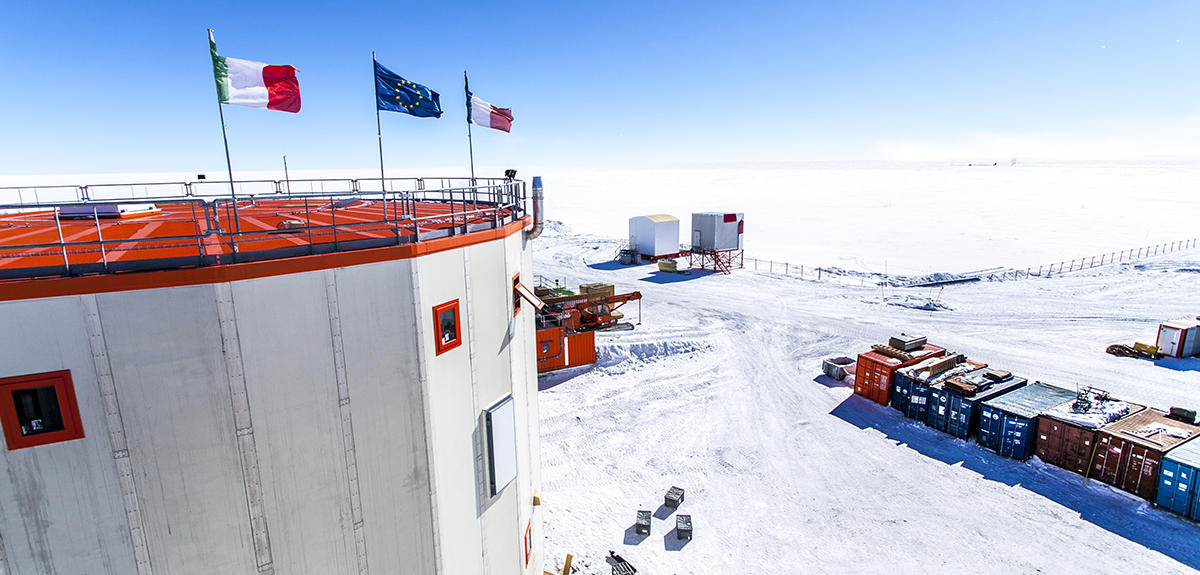
Let's be honest: apart from the scientists who work there and a handful of experts, few of us have a very clear picture of the poles. These distant, icy expanses even tend to get mixed up in the minds of the general public, many of whom are convinced that polar bears live in Antarctica and penguins in the Arctic (in fact, the former are endemic to the Arctic regions, while the latter are found only in the Antarctic and Sub-Antarctic regions).
Their geography isn't too clear to many people either, and yet, as the geographer and political scientist Camille Escudé, from the SciencesPo Center for International Studies (CERI)1 points out, “the first major difference between the Arctic and the Antarctic is geographical: the Arctic is an ocean bordered by land masses – the Eurasian and North American continents. In fact, it is a nearly landlocked sea like the Mediterranean, whereas Antarctica is a continent surrounded by the vast Southern Ocean.”
Although the polar regions come to mind as being almost completely empty, the Arctic and Sub-Arctic have in fact been inhabited for hundreds of thousands of years and are home to no fewer than 110 indigenous peoples, not to mention the millions of workers who come to work in its mines and ports. With no population of its own, Antarctica, on the other hand, sees ever-increasing numbers of scientists and tourists arriving in their thousands every southern summer (from November to April). Far from being remote, the poles are today the focus of international attention.
Antarctica, a land of science
Although the existence of an Antarctic continent, as a counterpart to the Arctic, was postulated in ancient Greece by Aristotle, it was not until the first half of the nineteenth century that explorers set foot there. Among them was the Frenchman Dumont d'Urville, who had set off in search of the magnetic South Pole. On 21 January, 1840 he landed at a spot he named “Adélie Land”, in honour of his wife Adèle, and took possession of the territory on behalf of France. “Historically, international law includes the theory of ‘empty territories’, which can be claimed if you are the first to discover them,” says legal expert Anne Choquet, an academic at Brest Business School, in northwestern France.
The dawn of modern science
As explorations continued, seven countries ended up claiming a portion of the 14-million-square-kilometre continent: France, Australia, New Zealand, Chile, Argentina, Norway and the United Kingdom. Argentina, Chile and Australia even demanded identical territories in the Antarctic Peninsula, in the northwest, which caused a certain amount of tension. However, apart from a few momentous expeditions, and some whaling and seal fishing along the coasts, the Antarctic was mostly ignored during the first half of the twentieth century. It was the International Geophysical Year, in 1957-1958, that really propelled it into the scientific arena. Sixty-seven nations embarked on a geophysical study of the Earth with the aim of gaining further understanding of the planet's physical properties, such as magnetism, as well as its interaction with the Sun.
Twelve countries set up forty-eight scientific bases in Antarctica. Although most of them were located on the coast, some were also established deep inside the continent, such as the Soviet Union's Vostok Station, famous for its deep ice drilling. “There were as many as 25,000 scientists in the field,” recalls Jérôme Chappellaz, director of the French Polar Institute Paul-Émile Victor, which manages France's polar stations. “This was truly the dawn of modern science in Antarctica.”
Frozen territorial claims
The end of the Geophysical Year nonetheless left scientists feeling somewhat frustrated. “They wanted to be able to continue working in Antarctica. But the claims on the continent by seven countries met with opposition from others, who refused to see the region carved up. It was a real problem,” Choquet explains. The Antarctic Treaty, signed in 1959 by the twelve International Geophysical Year States, made it possible to overcome these controversies. As the legal expert puts it, “It was an ‘agreement to disagree’”. In the name of scientific cooperation, territorial claims were frozen, and everyone accepted that other nations might have a different assessment of the situation. Broadly speaking, those countries that had territorial claims – also called “possessors” – could continue to assert them, while the others could keep on disagreeing!
The 1959 treaty enshrines three principles: peacekeeping (Antarctica is a non-militarised and non-nuclear region); scientific research and international cooperation which should enable anyone, whatever their nationality, to settle wherever they wish in order to conduct research (for example, the French-Italian Concordia Station, in the centre of the continent, is located in territory claimed by Australia); and finally environmental protection, which implies that every project in Antarctica must be assessed for its impact on the environment.
This agreement, the only one of its kind, allowed the two enemies of the time, the United States and the Soviet Union, to continue working together on the White Continent throughout the Cold War. Sixty years later, the Antarctic Treaty is still firmly in place. Proof of its strength is that the number of signatories has grown steadily, from 12 to 54 today. “In reality, only 29 have the right to vote at the annual meetings, such as the one France will host in June 2021,” Choquet explains. These “Consultative Parties” as they are called, include the seven “Possessor” States and those that maintain research stations or conduct regular expeditions to Antarctica. The latter include a number of European countries, as well as Asian nations such as Korea, Japan and of course China, which is well on the way to having the greatest number of bases, totalling five in all.
Ban on mining
Although Antarctica is principally a continent given over to science, today boasting nearly eighty scientific facilities belonging to some thirty countries, the 1959 treaty foresees that other activities like fishing or tourism are permitted, as long as certain rules are observed, such as the protection of seals and the conservation of marine wildlife. In 1988, the Wellington Convention authorised the exploitation of mineral resources, provided that environmental regulations were complied with. Indeed, it is thought that Antarctica is as rich in minerals and precious metals as South America and Africa, to which it was once connected.
However, several oil spills in 1989, including that of the Exxon Valdez in Alaska, highlighted the danger that such operations represent, simply due to the resulting transport. As a result, the convention on mineral resources was called into question, and in 1991 the Madrid Protocol was signed, prohibiting the exploitation of Antarctica for purposes other than scientific. “The protocol, whose thirtieth anniversary is being celebrated this year, enshrines Antarctica's status as a protected area. Not only does it provide for a fifty-year ban on mining, it also sets out very strict conditions for changing the rules of the game once the deadline has passed,” Choquet explains. However, even if the White Continent is a land of science, this doesn't mean that the countries that send their researchers there are totally free of ulterior political and economic motives. “A country's presence in Antarctica earns it a place on the international scene and a foothold in a strategic area of the globe,” Choquet points out.
The Arctic goes fully global
Unlike Antarctica, whose legal status is regulated by an international treaty, ownership of territories is not an issue in the Arctic. “If you stick to a strict definition, the Arctic refers to the area north of the Arctic Circle, or 66th parallel. Here, we know exactly who owns what,” says Escudé, who points out that eight countries are present in these regions, where four million people (15% of whom are indigenous populations) live all year round. Russia, the largest Arctic State by area, derives nearly 20% of its GDP from its polar territories. Next in line are Canada, the US (which bought Alaska from Russia in the nineteenth century and is separated from the Slavic giant only by the narrow Bering Strait), Norway, Sweden, Finland, Iceland and, finally, Denmark, via the autonomous territory of Greenland.
Discussion forum
Although these are all sovereign countries, they decided to join forces in the 1990s, and in 1996 set up the Arctic Council. This discussion forum, whose decisions do not have force of law, targets two very specific areas: environmental protection and sustainable development. In addition to the eight Arctic nations, six associations representing indigenous populations are among the organisation's permanent members. “There is no question of tackling controversial subjects such as the strong military presence along the shores of the Arctic, or fishing,” Escudé points out. “We are talking about the lowest common denominator. But make no mistake, there are huge environmental issues at stake in the Arctic, and in particular that of pollutants such as mercury, which can be found throughout the entire food chain, as well as biodiversity, which is being strongly impacted by climate change.”
All the discussions are underpinned by the work of scientists in six permanent working groups (pollutants, biodiversity, arctic flora and fauna, etc). The heads of state of the Arctic Council meet every two years, and invite a number of observers, i.e. around a dozen countries (including France, Germany, India, and above all China, which today considers itself to be a ‘near Arctic State’), NGOs such as the WWF, and intergovernmental organisations. “Although they have the right to take part in negotiations, they are not allowed to speak at meetings or take part in votes,” Escudé explains.
This led former French Prime Minister Michel Rocard, appointed as France's Ambassador to the Poles in 2009, to describe the Arctic Council, somewhat scathingly, as a “property management company”. “The Arctic is one of the few regions in the world where France has no territory and is always someone else's guest,” Chappellaz confirms. “We share only a small scientific station with the Germans in Svalbard, an archipelago located to the north of Norway that includes the island of Spitsbergen.”
New sea routes
There are many important issues at stake in the region however, leading to a realignment of traditional alliances. One case in point is the opening to commercial shipping of the Northeast passage along the coast of Russia, and the Northwest passage through the islands of Canada. “The poles are the regions where climate is changing the fastest,” Escudé explains. “The Arctic is warming two to three times quicker than the rest of the planet. As a result, the area of sea ice is shrinking year by year. By 2040, it may even have completely disappeared during the summer months, which will make it possible to sail all along the Siberian coast and through the archipelagos of northern Canada.” This will be a major boon for commercial shipping, with routes linking Asia and Europe being shortened by some 30 to 40%. It is also likely to lead to an increase in international tensions: some countries, including the US and China, along with the European Union, consider that these passages should have the status of international straits and be open to free circulation.
This is vigorously disputed by Russia and Canada in particular, who point out that the 12 nautical mile rule (under which the Law of the Sea grants exclusive use of the first 12 nautical miles to coastal countries) grants them sovereignty over these routes. “For the time being, all this is very theoretical, because the straits in question are still hard to navigate,” Escudé points out. “The extreme conditions in the Arctic (cold, ice storms, and the proliferation of small icebergs broken off from sea ice and continental glaciers), together with the absence of infrastructure along the coasts (apart from the deep-water ports of Siberia), mean that shipowners remain very cautious about the matter.”
Today, it is mainly the exploitation of mineral resources (oil and gas, as well as metals such as gold and uranium) that is whetting appetites, and not only in the region, which is estimated to hold nearly a quarter of the planet's oil and gas reserves. Although there is a long history of mining in Alaska, the Yukon and Siberia, where it dates back to the 1950s and 1960s, it wasn't always particularly profitable.
Booming mining projects
With the pressure on global commodity stocks and rising prices, developing these inhospitable regions is beginning to make economic sense. “The Arctic has become a vast construction site,” testifies anthropologist Alexandra Lavrillier from the Cultures, Environments, Arctic, Representations, Climate (CEARC) laboratory, who studies this field. “In the last ten years or so, there has been a boom in mining projects both at sea, and on land.” This is the case in western Siberia, in the immense Yamal peninsula, where the production of liquefied gas (in which the French company Total is a stakeholder) has led to the emergence of urban settlements with tens of thousands of inhabitants. This race for development is already impacting the indigenous populations, who are reindeer herders and hunters.
Greenland provides a good illustration of the tensions this generates: the opening of mines and the arrival of ever-increasing numbers of tourists, facilitated by global warming and melting glaciers, admittedly provides a financial windfall that encourages the desire for independence of this autonomous territory, currently part of Denmark. However, their effects on ecosystems are a source of concern for part of the Inuit population, who still live off traditional activities. Dissension around this question nearly led to the break-up of Greenland's coalition government in early 2021. No doubt we haven't heard the last of the polar regions.
- 1. CNRS / Sciences Po Paris.


